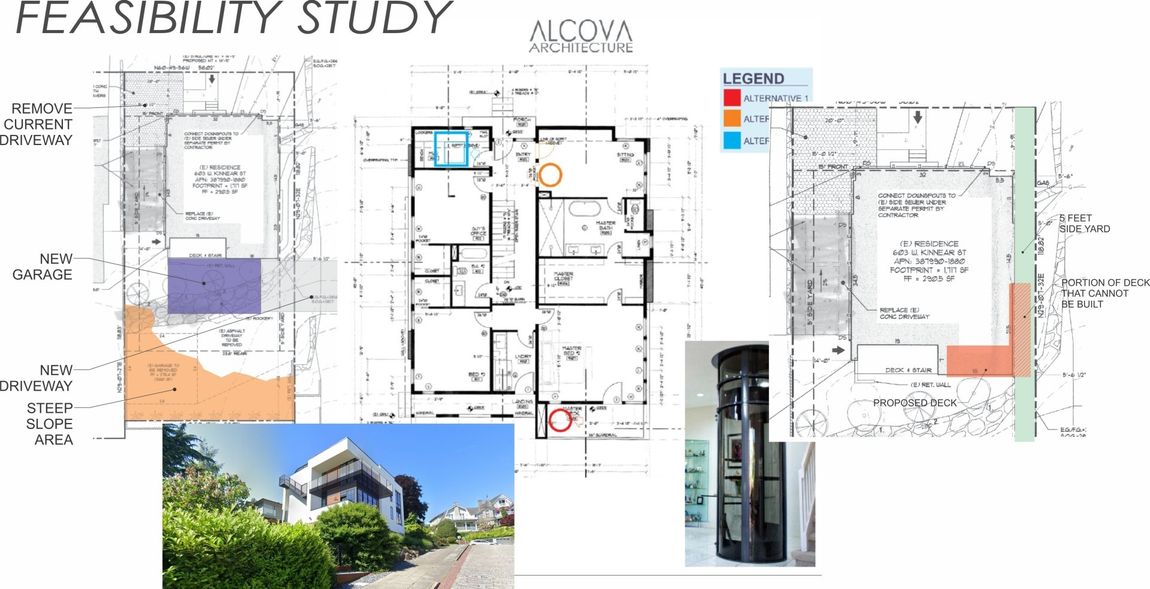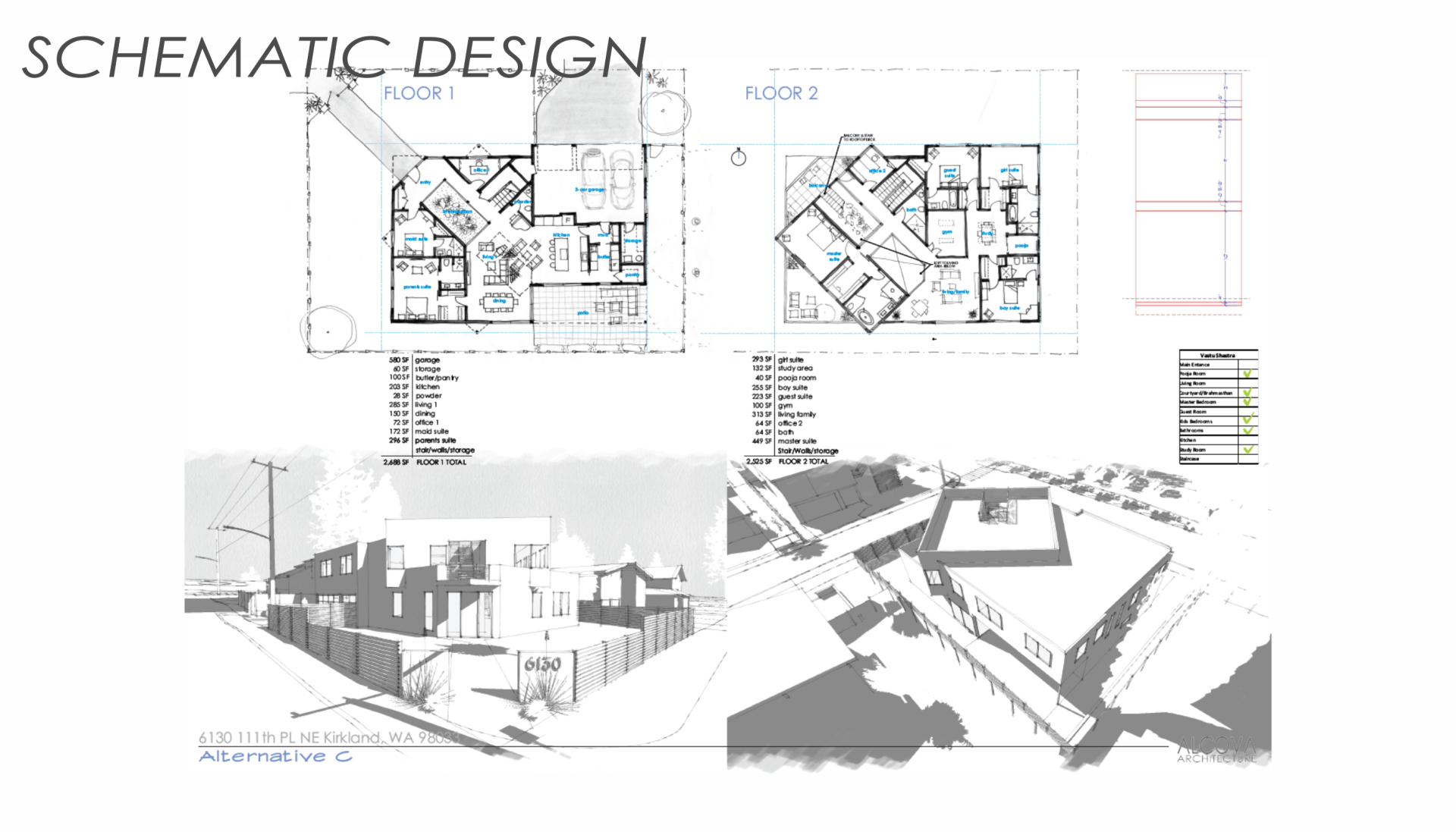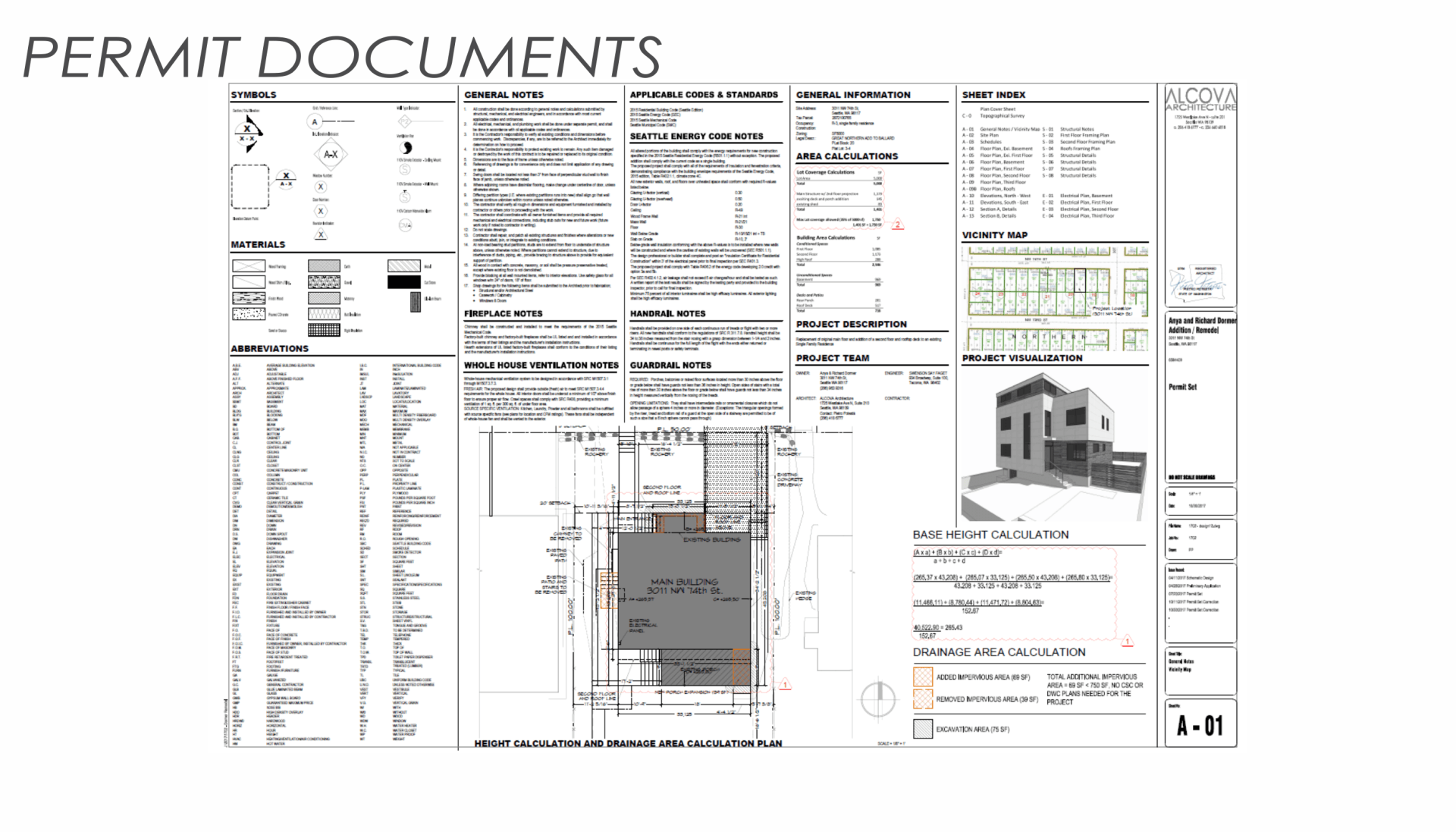Services
Our Services
Site Selection and Analysis
If your project has a goal but not yet a location, we can work with you to assess if a potential property is the right one.
Researching ahead of time can help screen out problems early on.
This can even help the client avoid catastrophic situations that make a project unfeasible or unreasonably expensive.
Feasibility Study
Feasibility studies are all about determining if a project can be built without stumbling into unsurmountable issues. Matching project goals and
regulatory restrictions is a necessary first step to help you decide whether it's reasonable to move forward. A feasibility study can help you respond to urgent questions and inform the future of your project. Can I add a floor? Can I build on a property with steep slope? Can I add a DADU in my backyard?
Programming
Programming is about setting goals and priorities. Sometimes the impetus for a project is as simple as “I want to move this wall out of the way". Transforming these feelings into a clear program can unlock new and better solutions for your project.
We will sit down with you, learn about your priorities, and develop a clear program that will help you meet your goals in a creative and organized way.

Contact us to learn more about our process
Contact Us
Site Selection and analysis
Schematic design is possibly the most engaging and fun phase of a project for both the client and the architect.
We use quick sketches to organize spatial and architectural elements, broaden our imagination, and test the possibilities of a new design. This phase is highly interactive and helps shape the project direction, while limiting the risk of looking back and regretting not having tried other solutions.
Design Development
Design development furthers the work done during schematic design in several ways.
Bubble diagrams, sketches and early drawings solidify into more tangible solutions, often unlocking new ways of thinking about design form, structures, systems, and many more parameters. It is in this phase that the work involves other experts, like the structural and civil engineers, who work with us to study and optimize solutions moving forward.
Permit Documents
A house design is an instrument to communicate an idea to different audiences. An important audience is the planning or building department that will
approve the permit. The design documents in this phase need to demonstrate compliance with the various applicable codes.
Meeting requirements often implies the production of an important amount of documents. The procedure for a permit varies with the location and type of project.
Construction Documents
The construction set provides the general contractor and subcontractors with the information necessary to price, order, and build the entire house.
The construction set will include your choice of all fixtures, materials, colors, trims, and finishes of the house, as well as electric plans, cabinetry design, hardscaping and landscaping plans, and other special features and details.
Assistance During Construction
During construction the architect becomes an agent of the client, verifying that your vision, and the design are respected throughout the building phase. Custom designs present a number of challenges that need to be addressed in cooperation with owners and contractors. Custom jobs often include owner-initiated changes, additional design, engineering and permitting.
Environmental Permits
Our Puget Sound area is beautiful, but building here can be complicated.
Many buildable lots are in or near environmental critical areas; they often require work close to steep slopes or other hazards. In these situations, most projects will need to go through special exemption and comply with specific limitations. We know how to steer the project though the environmental permitting process without getting bogged down.
Site Design
Site design is a fundamental component of any project. It not only ensures that the design meets the regulatory requirements of the site, but also addresses exposure, light, views, access, and relation between indoor / outdoor spaces. In a good project, the site design and the building design will each influence and enhance the other.
Landscape/Hardscape Plans
Landscape design is not a luxury.
Landscaping provides the visual context for a home. Most projects require careful planning to coordinate landscape design elements (lighting, retaining walls, planting beds, paths and stairs, fencing, signage, sprinkler systems, etc.) with city
requirements. Whether you want us to design the landscaping, or you have a landscape designer in mind, we can bring value to this very important design element.
Lighting and Electrical Plans
Building permits do not require a drawn plan set for electrical and lighting.
A carefully crafted plan helps the homeowner choose and understand options and solutions, how to make the outlet locations work for the needs of the room, and how to visualize fixtures and special elements. At the same time, an
electrical plan is a strong support for tying pricing to real components, and to
communicate clearly with the subcontractors about what goes where.
Sustainability and Net-Zero
We like working with our clients to choose together how to make air, energy, and water performance work for them, and we pride ourselves in going above and beyond code requirements in air quality, energy efficiency, and water conservation and reuse. We always work to bring extra value to projects, for example, embedding passive and active energy-saving features in the design.

Slide title
Write your caption hereButton
Slide title
Write your caption hereButton
Slide title
Write your caption hereButton
Project phases
Write your caption hereButton

Contact Details
8026 26th Ave NW, Seattle WA 98117, United States of America
// 206 418 6777
